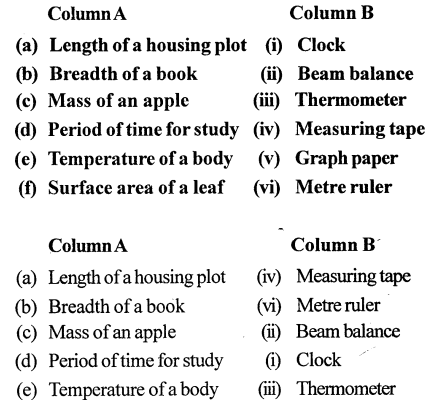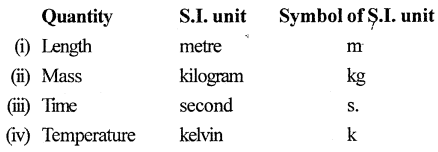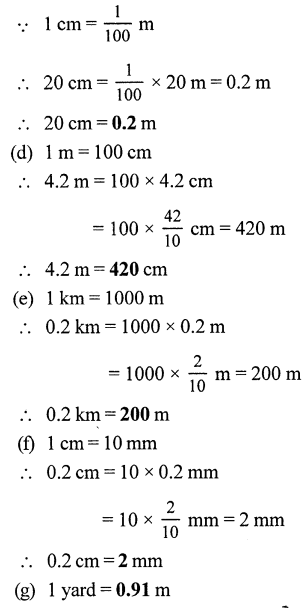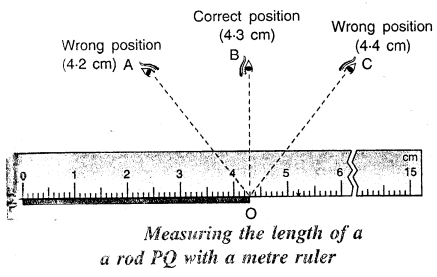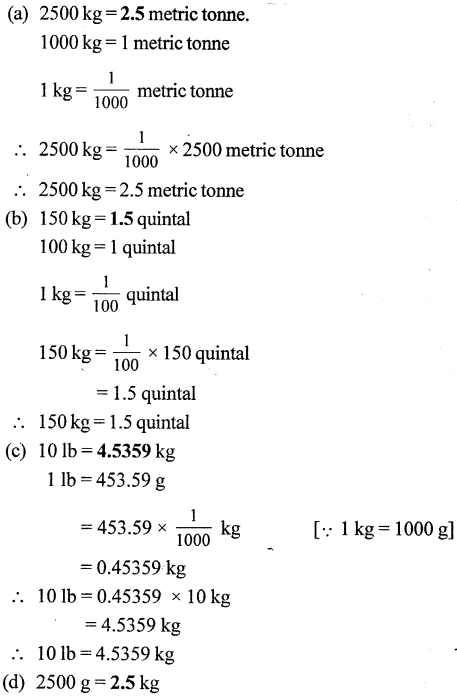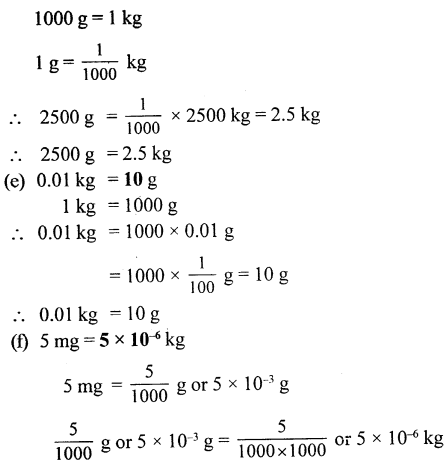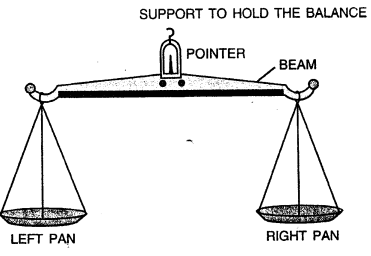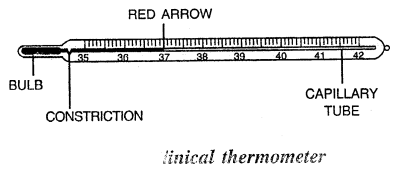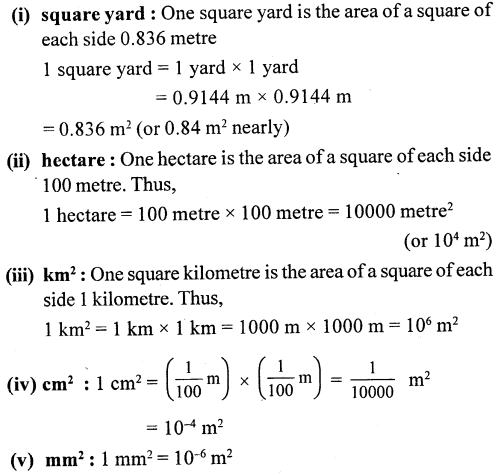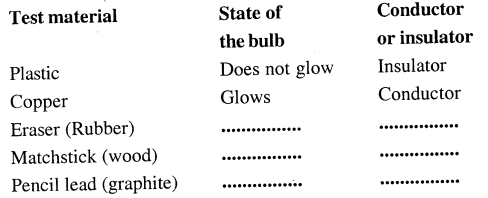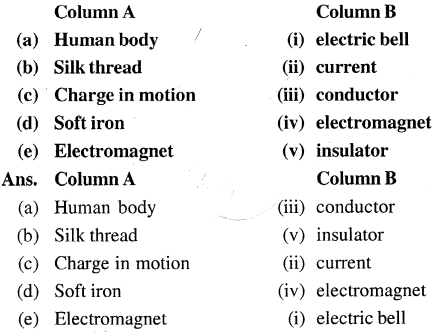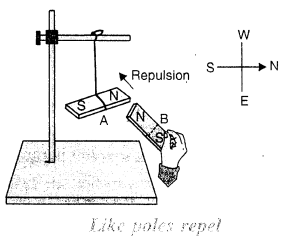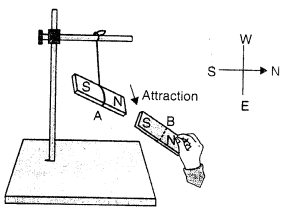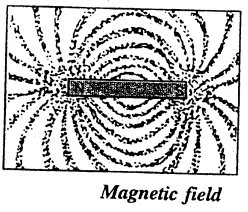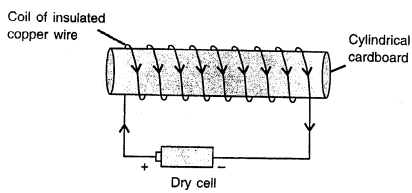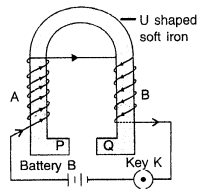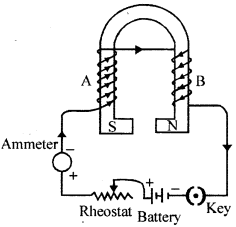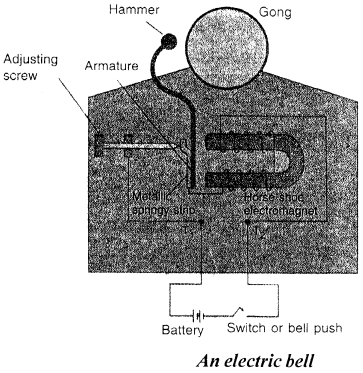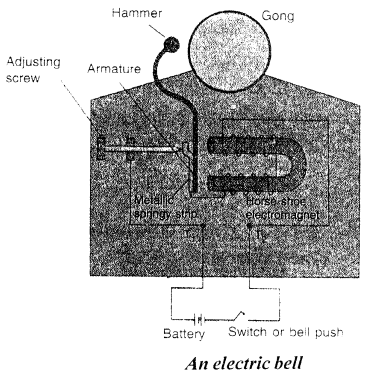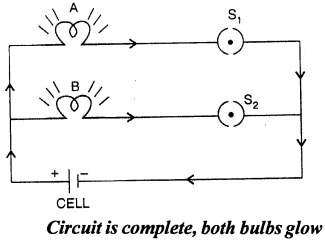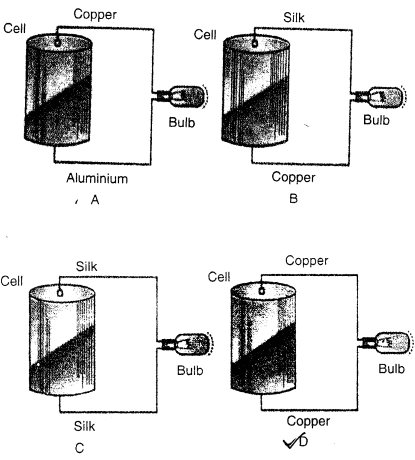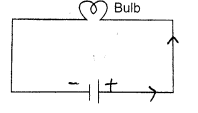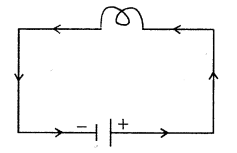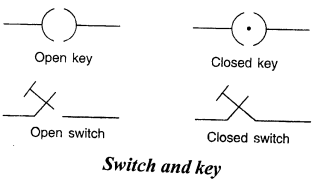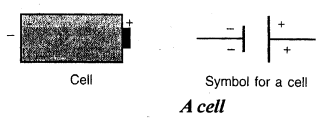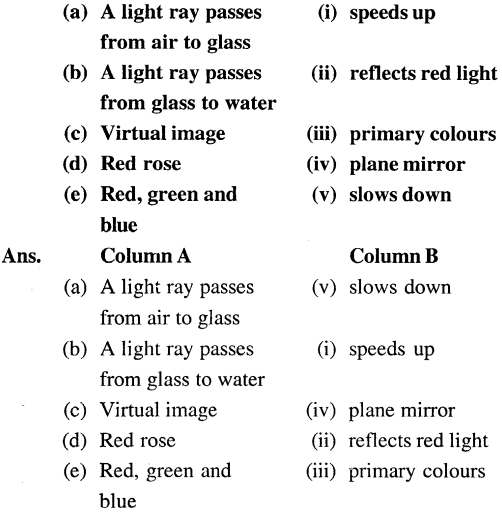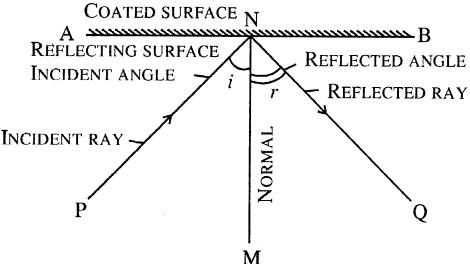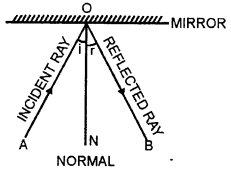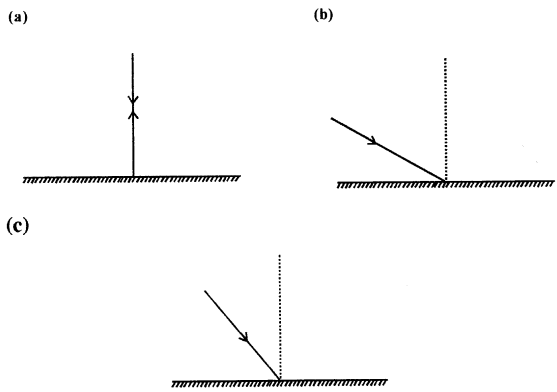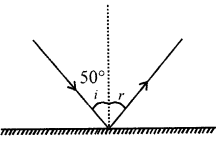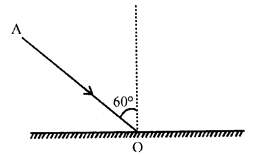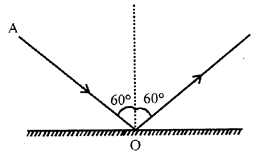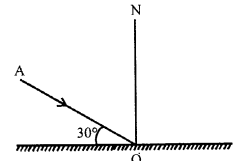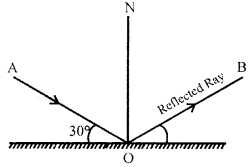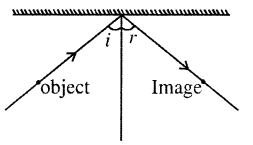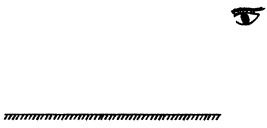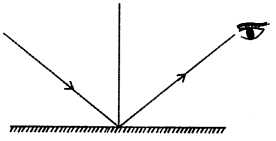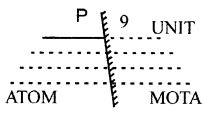Selina Concise Physics Class 6 ICSE Solutions – Matter
ICSE SolutionsSelina ICSE SolutionsML Aggarwal Solutions
APlusTopper.com provides step by step solutions for Selina Concise ICSE Solutions for Class 6 Physics. You can download the Selina Concise Physics ICSE Solutions for Class 6 with Free PDF download option. Selina Publishers Concise Physics for Class 6 ICSE Solutions all questions are solved and explained by expert teachers as per ICSE board guidelines.
Selina Class 6 Physics ICSE SolutionsChemistryBiologyMathsGeographyHistory & Civics
Selina Concise ICSE Solutions for Class 6 Physics Chapter 1 Matter
Synposis
- Matter is the substance which occupies space and has mass.
- The three states of matter are
- solid,
- liquid
- gas.
- Matter is composed of large number of molecules.
- A molecule is the smallest particle which can exist freely in nature by itself and it retains the properties of the substance.
- All molecules of a substance are identical, but the molecules of different substanes are different.
- A molecule is very small in size (10-10 m).
- The molecules are separated from each other with spaces called inter-molecular spacing.
- The molecules in a substance are held together by the forces acting between the molecules which are called the inter-molecular forces.
- The force of attraction between the molecules of the same sub¬stance is called the force of cohesion, while the force of attraction between the molecules of two different substances is called the force of adhesion.
- The forces of cohesion and adhesion are effective only when the separation between the molecules is 10-9 m. When the separation becomes more, they vanish.
- The molecules in a substance are not at rest, but they are con¬stantly in motion.
- In a solid, the molecules are rigid, the inter-molecular spacing is least, the inter-molecular forces are strongest and the molecules remain in their fixed positions. They vibrate to and fro about their mean positions, but they do not leave their positions, so a solid has a definite shape and a definite volume.
- In a liquid, the molecules are not rigid, the inter-molecular spacing is more than that in solids, the inter-molecular forces are weak and the molecules are free to move within the boundary of the liquid, so the liquid has a definite volume, but it does not have a definite shape.
- In gases, the molecules are not rigid, the inter-molecular spacing is more than that in solids and liquids, the inter-molecular forces are weakest and the molecules are free to move anywhere in space. So the gas has neither a definite volume nor a definite shape.
Activity – 2
Classify 20 objects around you as solids, liquids and gases
Solids : Ice, Aluminium, Silver, Calcium, Gold, Iron, Sodium, chloride, Sugar, Wood.
Liquids : Water, benzene, chloroform, oil, honey, glycerine, hydrochloric acid, alcohol, dettol.
Gases : Steam, Air, Oxygen, Hydrogen, Chlorine, Nitrogen, Ammonia, Helium, Argon.
Test yourself
A. Objective Questions
1. Write true or false for each statement
(a) The molecules of each substance are identical.
Answer. False
(b) The inter-molecular forces are effective at all distances between the two molecules.
Answer. False
(c) The molecules in a substance arc in random motion.
Answer. Tme
(d) In a gas, the molecules can move anywhere in space. .
Answer. Tme
(e) The liquids are less viscous than the gases.
Answer. False
2. Fill in the blanks
(a) All the molecules of a substance are identical.
(b) The inter-molecular spacing is least in solids more in liquids and still more in gases.
(c) The molecular motion in liquid and gas is in zig-zag path.
(d) In a solid, the molecules vibrate to and fro but they remain at their fixed positions.
(e) The inter-molecular forces are the weakest in gases.
(f) A solid exerts pressure downwards on its base.
(g) The gases are least dense.
(h) A solid is most rigid.
3. Select the correct alternative
(a) The diameter of a molecule is approximately
- 1 cm
- 10 cm
- 10-10 m
- 1 m
(b) The inter-molecular forces are strongest in
- solids
- liquids
- gases
- both (i) and (ii)
(c) The molecules
- in solid, liquid and gas, move freely anywhere.
- in a solid, move freely within its boundary.
- in a liquid, move within its boundary.
- in a gas, move only within its boundary.
(d) The solids are
- more dense
- less dense
- least dense
- highly compressible
(e) The inter-molecular forces in liquids are
- as strong as in solids
- stronger than in solids
- weaker than in solids
- weaker than in gases
4. Match the following columns
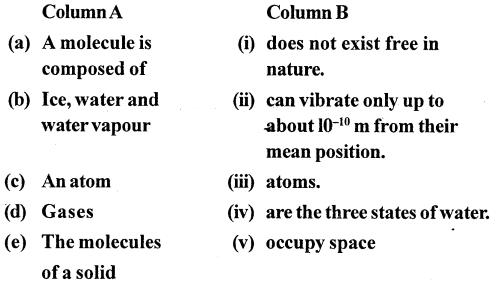

B. Short/Long answer questions
Question 1.
Define matter. What is its composition ?
Answer:
Matter is defined as anything which occupies space and has mass. It can be perceived by our sense of smell, touch, sight, hearing and taste.
Matter is composed of tiny particles known as atoms.
Question 2.
Name the three states of matter.
Answer:
The three states of matter are solids, liquids and gases.
Solids —A solid has a definite shape and definite volume.
Example – wood, stone, iron, ice etc.
Liquid —A liquid has a definite volume but not definite shape.
Example — water, juice, milk, oil, etc.
Gases —A gas neither has definite shape nor a definite volume.
Example – air, hydrogen, oxygen, water vapour etc.
Question 3.
What is a molecule ?
Answer:
The smallest unit of matter which can exist independently is called molecule.
Example: Oxygen molecule (O2) made up of two (O) atoms.
Question 4.
What is the approximate size of a molecule ?
Answer:
Matter is made up of molecules which are very small in size (~10-9 m).
Question 5.
One litre of water has 6.02 × 1026 molecules. Estimate the size of a molecule.
Answer:
The size of a particle (or molecule of matter is very small. 1 litre of water has 6.02 × 1026 molecules, so the volume of a particle of
![]()
Thus the diameter of a water molecule is nearly 1.27 × 10-9 metre.
Question 6.
What do you mean by inter-molecular spacing ?
Answer:
Intermolecular space — The space between any two consecutive molecules of a substance is called intermolecular space
Question 7.
Describe a simple experiment to illustrate the existence of inter-molecular spacing.
Answer:
Take 100 ml of water in a measuring cylinder. Add 20 gram of salt in water gently and stir it well so as to dissolve the salt well in water. It is noticed that the level of water does not change. It shows that the particles of salt occupy spaces between the particles of water.

Question 8.
What do you mean by inter-molecular forces ?
Answer:
Intermolecular force of attraction — The force of attraction between the molecules (like molecules or unlike molecules) is called intermolecular force of attraction.
Question 9.
What are the forces of cohesion and adhesion ?
Answer:
The force of attraction between the molecules of similar kind is called force of cohesion.
Example: The forces between water molecules.
This force of cohesion keep the molecules of the substance bind together.
The force of attraction between different types of molecules is called force of adhesion.
Example: When a glass filled with water is emptied some water I particles remain stuck to the glass due to the adhesion between water molecules and glass.
Question 10.
State three characteristics of molecules of matter.
Answer:
The particles of matter called molecules, have the following characteristics:
- They are very small in size.
- They have spaces between them.
- They are in constant random motion.
- They always attract each other.
Question 11.
State the approximate spacing between two molecules of a matter.
Answer:
The spacing between particles of a matter is called inter-molecular space.
Question 12.
How do the solids, liquids and gases differ in their following properties
(a) Size
(b) Shape
(c) Density
Answer:

Question 13.
The molecules in a substance are in motion. What type of path do they follow ?
Answer:
The particles in a substance are not at rest (in motion),and they move randomly in all possible directions in a zig-zag Path
Question 14.
Describe a simple experiment to illustrate that molecules are not at rest, but they constantly move.
Answer:
Take a beaker. Fill it partly with water. Add some lycopodium powder in the beaker containing water. Stir the contents of the beaker with a glass rod. Take out few drops of this suspension on a glass plate. Place it on the table and illuminate it with a table lamp. Observe the glass plate through a microscope. It is found that the fine particles of lycopodium powder move rapidly in a random manner and their path is zig zag as shown in figure below.

Question 15.
Write down five general properties of solids, liquids and gases.
Answer:
Solids:
- The molecules here are very tightly packed having negligible or very less intermolecular space.
- They have the strongest intermolecular force of attraction.
- The molecules have very small vibration about their mean position i.e. small amplitude.
- They have a definite shape and volume.
- They are generally hard and rigid.
- They are good conductors of heat.
Liquids:
- Molecules are less tightly packed.
- The intermolecular force of attraction is less than that of solids.
- The molecules here can move from one place to another
- Do not have any particular shape of their own and thus acquire the shape of the vessel.
- A particular quantity of a liquid has a definite volume at a given temperature.
Gases :
- The force of attraction between the molecules is the least.
- The intermolecular space is the largest.
- Neither have a definite shape nor a definite volume.
- The molecules move independently.
- Worst conductors of heat.
Question 16.
Give the molecular model for a solid and use it to explain why a solid has a definite volume and a definite shape.
Answer:
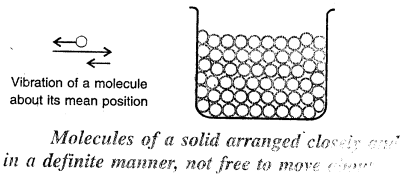
Here the molecules are very tighty packed that there is no or very less intermolecular space and there is high intermolecular force of attraction (force of cohesion).
The molecules do not move about their mean position and thus solids have a definite shape and volume.
Question 17.
Describe the molecular modcl for a liquid. I-low does it explain that a liquid has no definite shape, but has a definite Volume ?
Answer:

Here the molecules are less tightly packed as compared to solids and also there is lesser force of intermolecular attraction. The intermolecular distance is greater than that in the solids. Thus, they do not have a definite shape but acquire the shape of the vessel in which they are contained but have a definite volume at a given temperature.
Question 18.
A gas has neither a definite volume nor a definite shape. Describe the molecular model to explain it.
Answer:
Here the molecules are far apart from each other i.e. have the greatest intermolecular distance which result into the weakest intermolecular forces of attraction. The molecules as are not
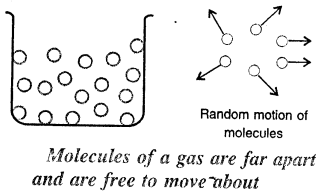
bound by any strong force move about freely and thus gases do not have a definite shape and also do not have any definite volume.
Question 19.
Distinguish between the three states of matter—solid, liquid and gas on the basis of their molecular models.
Answer:
Solids:
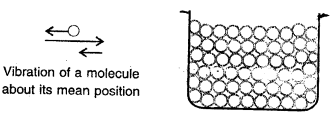
Here the molecules are very tighty packed that there is no or very less inteimolecular space and there is high intermolecular force of attraction (force of cohesion).
The molecules do not move about their mean position and thus solids have a definite shape and volume.
Liquids:
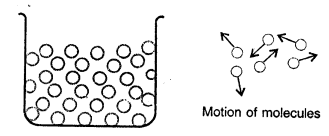
Here the molecules are less tightly packed as compared to solids and also there is lesser force of intermolecular attraction. The intermolecular distance is greater than that in the solids. Thus, they donot have a definite shape but acquire the shape of the vessel in which they are contained but have a definite volume at a given temperature.
Gases :
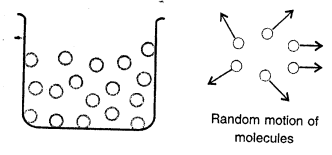
Here the molecules are far apart from each other i.e. have the greatest intermolecular distance which result into the weakest intermolecular forces of attraction. The molecules as are not bound by any strong force move about freely and thus gases do not have a definite shape and also do not have any definite volume.
Question 20.
Distinguish between solids, liquids and gases on the basis of their following properties :
(a) compressibility
(b) fluidity
(c) rigidity
(d) expansion on heating
Answer:
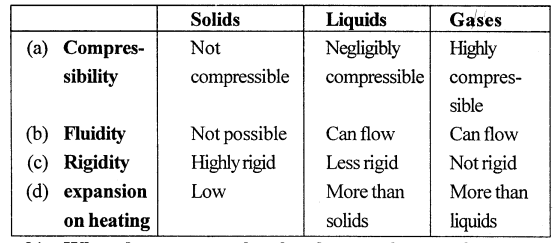
Question 21.
What do you mean by the change of state of matter ? Explain:
(a) the change of a solid into a liquid at a constant temperature, and
(b) the change of a liquid into a gas at a constant temperature.
Answer:
The change in state of matter of a substance from solid to liquid or from liquid to gas is brought by imparting heat energy to it at a constant temperature.
(a) The process of change of a substance from solid state into its liquid state on absorption of heat at a particular temperature, called the melting point, is called melting or fusion i. e.
![]()
(b) The process of change of a substance from a liquid state to its gaseous state at a particular temperature, called the boiling point,
is called boiling or vaporisation, i.e.
![]()
